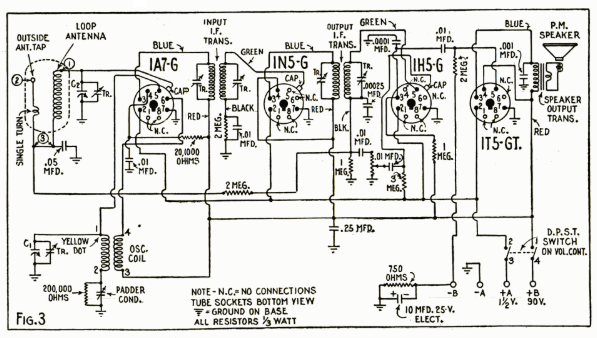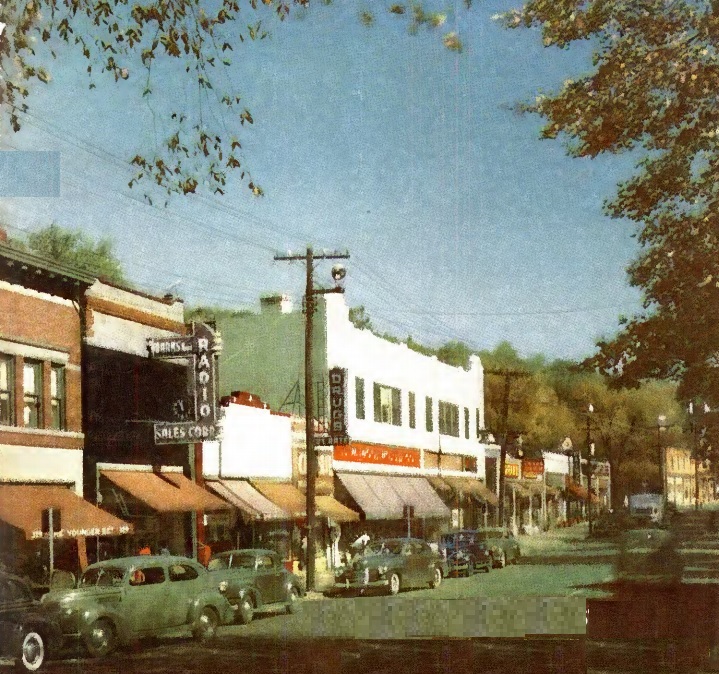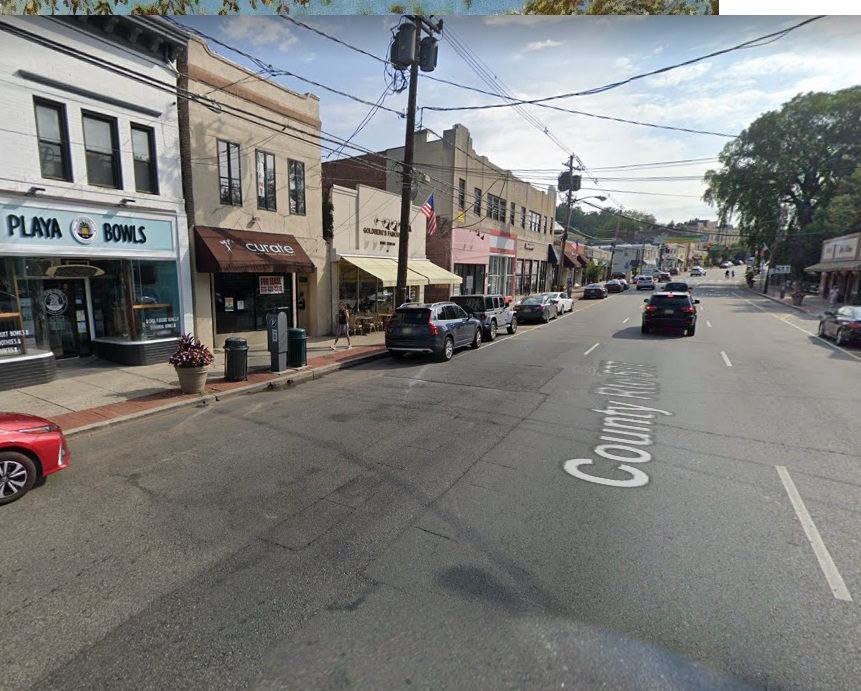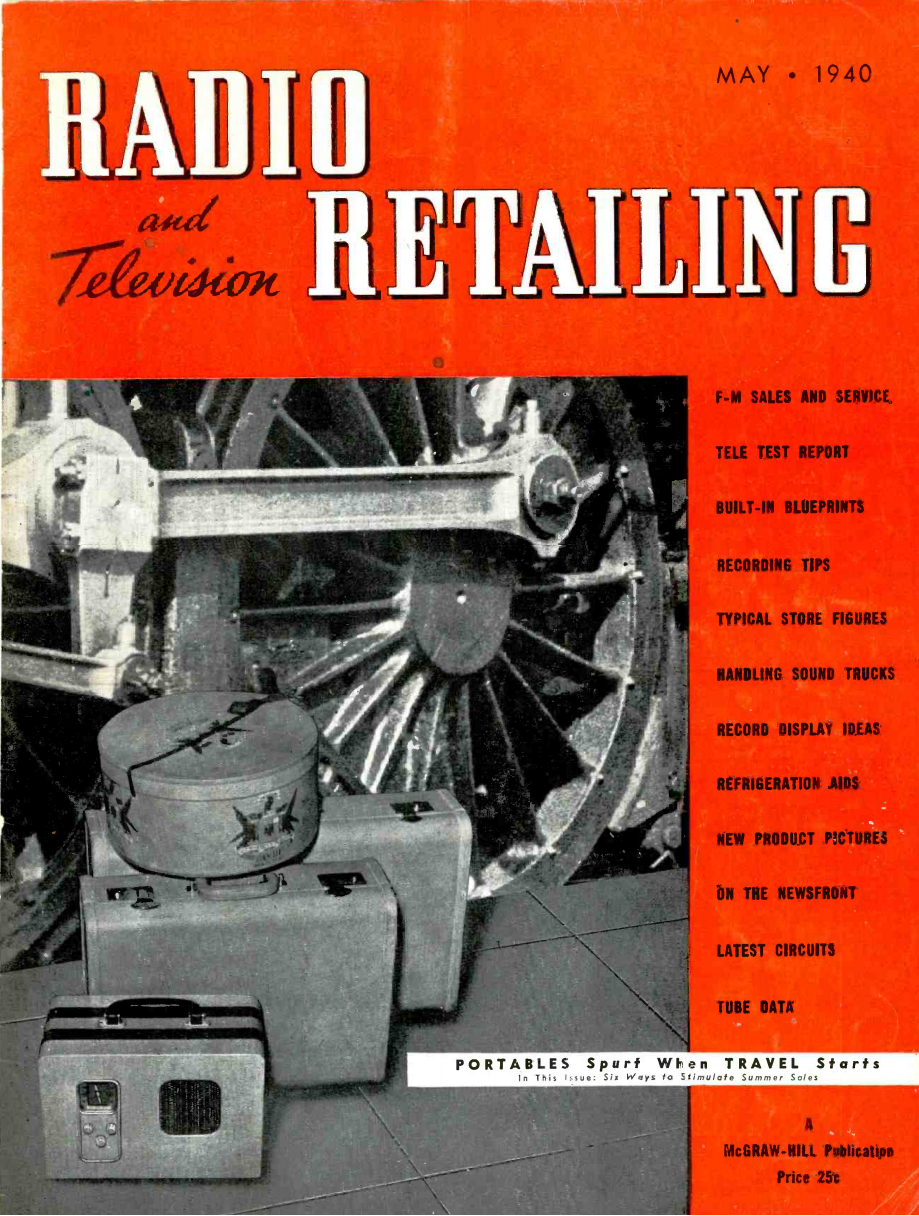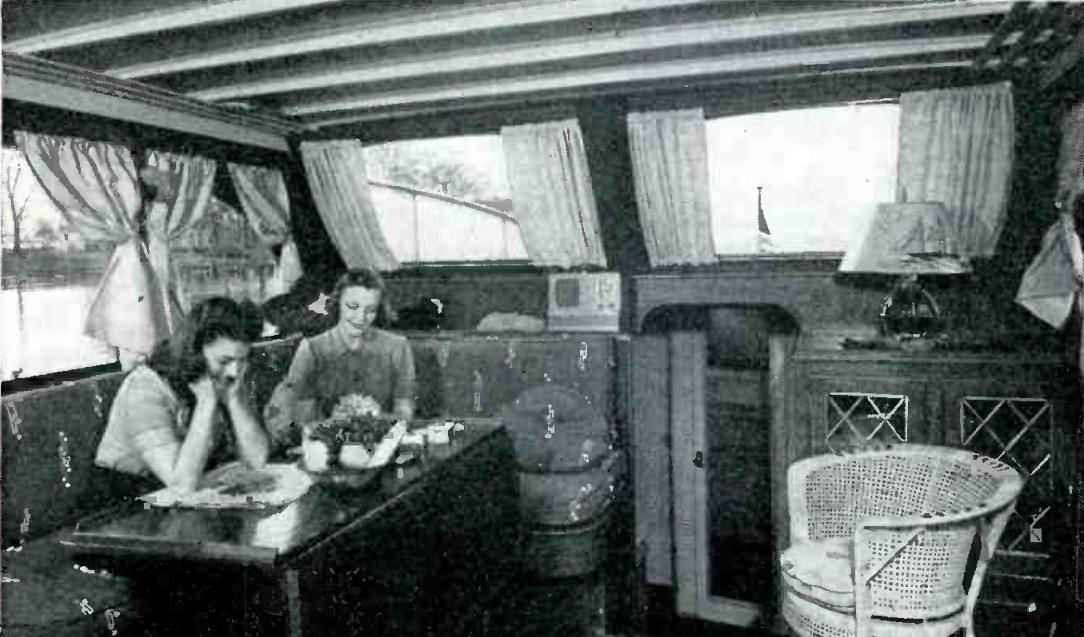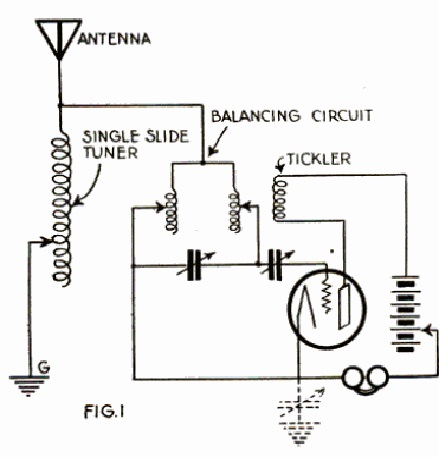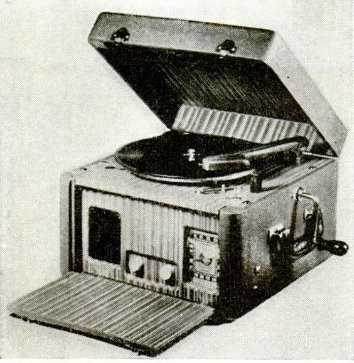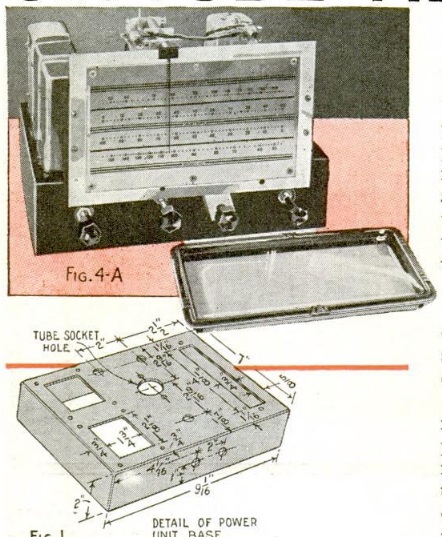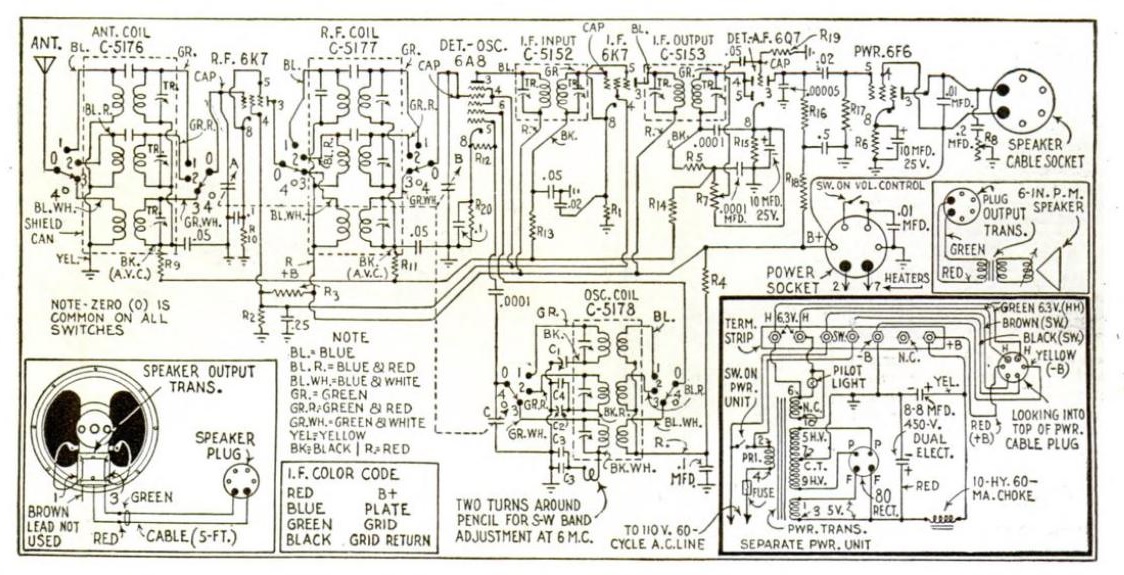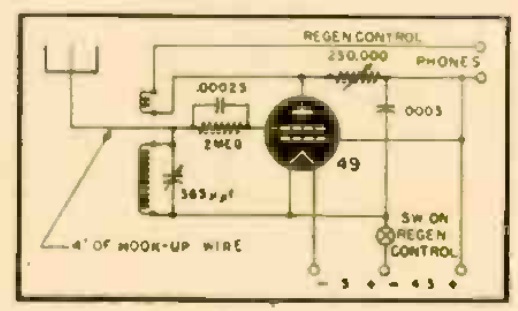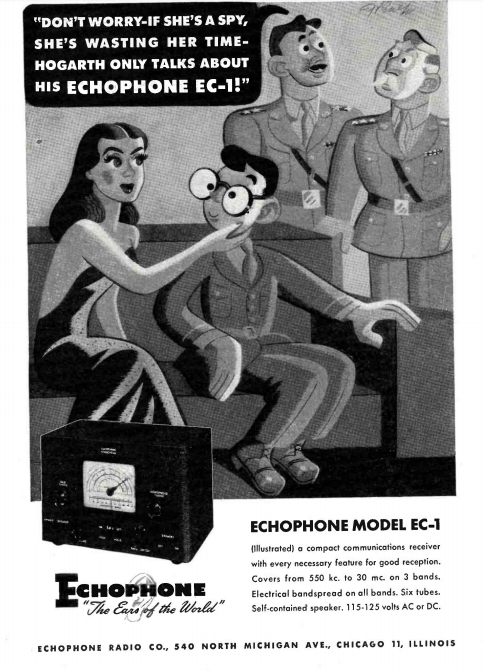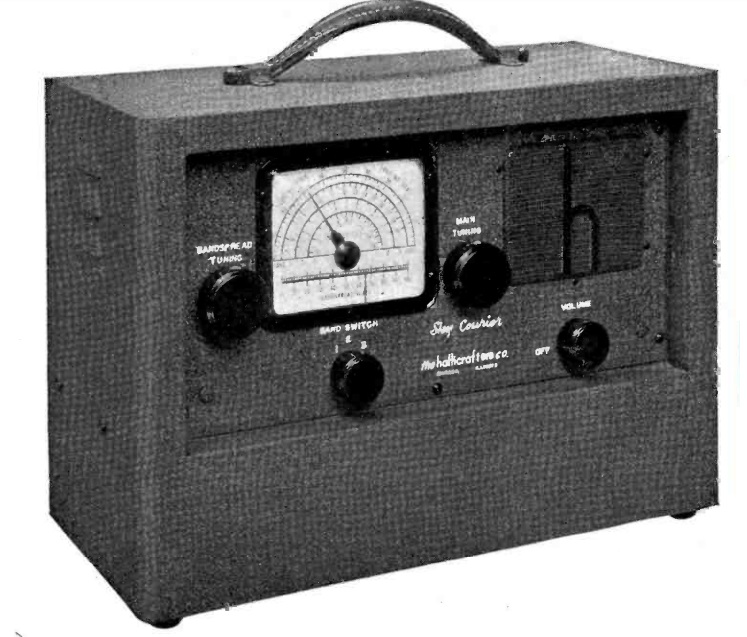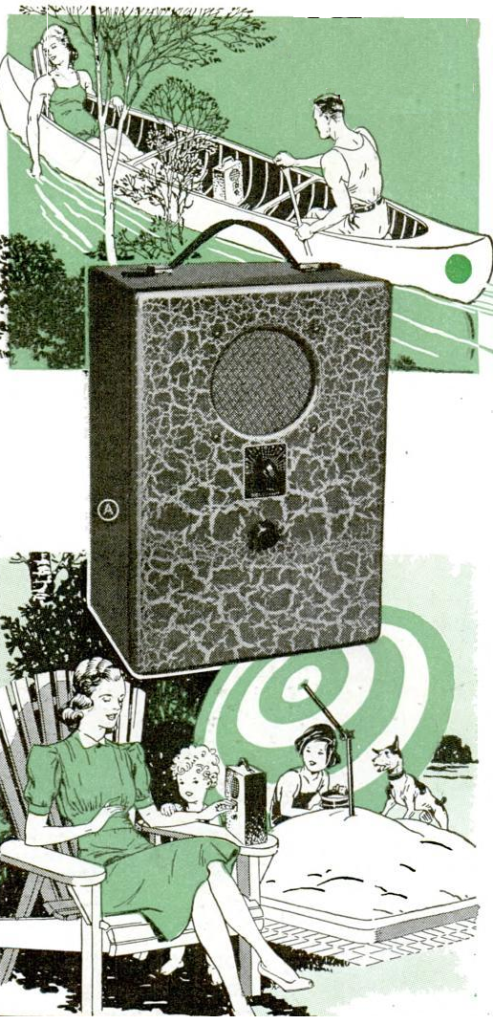 Shown here are just a few examples of how fun in the summer of 1940 could be augmented with this handy portable receiver, as described in the June 1940 issue of Popular Mechanics. The set ran off a commercially available (at least until the war came along) combination A/B battery which would allow the set to be run on trains, boats, camps, summer homes, or the lawn for up to 200 hours. Provision was made for an external antenna, but the set’s internal loop antenna would pull in signals from up to 100 miles away, and 1500 miles at night.
Shown here are just a few examples of how fun in the summer of 1940 could be augmented with this handy portable receiver, as described in the June 1940 issue of Popular Mechanics. The set ran off a commercially available (at least until the war came along) combination A/B battery which would allow the set to be run on trains, boats, camps, summer homes, or the lawn for up to 200 hours. Provision was made for an external antenna, but the set’s internal loop antenna would pull in signals from up to 100 miles away, and 1500 miles at night.
Parts for the four-tube superhet were said to cost about $7.50, not including the battery and case.

